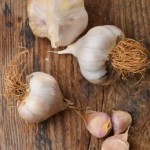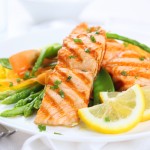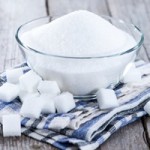

 Many people confuse inflammation with infection. Though infection and inflammation can happen at the same time, they are completely different. Infection is just one of the causes of inflammation.
Many people confuse inflammation with infection. Though infection and inflammation can happen at the same time, they are completely different. Infection is just one of the causes of inflammation.
Inflammation is nothing but your body’s response to a physical stress. For example, if your body is too tired, it can cause inflammation; if you get a cut, it can cause inflammation. If you eat something too spicy it can cause inflammation. If you touch a scalding cup, it can cause inflammation. If you get an infection (acne, a cold, or pink eye) it can cause inflammation.
Hippocrates, the father of medicine, saw the inflammation process as a digestion of diseased material in the body.
So you’d think inflammation is good. Well, yes and no. Let me explain.
 Normally, inflammation is characterized by calor, dolor, rubor, tumor, which is Latin for heat, pain, redness and swelling. When these symptoms happen, we know there is inflammation and we do something (take medicines, rest, change our diet) to help our body fight the inflammation. The inflammation subsides and all is good. This kind of inflammation is good, because it helps the body protect itself.
Normally, inflammation is characterized by calor, dolor, rubor, tumor, which is Latin for heat, pain, redness and swelling. When these symptoms happen, we know there is inflammation and we do something (take medicines, rest, change our diet) to help our body fight the inflammation. The inflammation subsides and all is good. This kind of inflammation is good, because it helps the body protect itself.
However, there is another kind of inflammation called silent inflammation. This inflammation may not have the dolor (pain). So we do not know about it. It slowly festers inside the body, becomes chronic and causes huge damage to the tissues and organs. If this kind of inflammation happens in important organs like your brain, or your heart, it can cause serious damage.
Needless to say, this kind of inflammation is bad and has to be stopped.
As it would be unwise to constantly keep taking medicines to fight this silent inflammation, the best way to do it is through your diet. There are many natural anti-inflammatory herbs and anti-inflammatory spices. In the following, we will not only take a brief look at the ingredients that make up an anti-inflammatory diet, but even some tips to reduce inflammation.
Turmeric: When it comes to natural anti-inflammatory foods, the first thing that comes to mind is turmeric. It is the king of anti-inflammation foods. Now so much has been written about this yellow spice, and there is so much information about it, that I will just make this mere mention about it and devote the space to other lesser-known anti-inflammation foods.
But here’s an interesting fact about turmeric: In some villages in India, mothers add a sprinkling of turmeric into milk before giving it to their children. Not only does this mask the milky flavor that most children dislike, it is a daily dose of protection against inflammation.
Ginger: A zesty spice used in many Asian cuisines, ginger is a handy anti-inflammatory spice. Ginger can be purchased as a fresh root in most supermarkets, or you can buy it in dry powdered form. Ginger has been used as a traditional medicine to treat stomach upset, headaches and infections in ancient Chinese medicine as well as in Ayurveda, the Indian system of natural medicine, for centuries. Today, its healing properties have been confirmed by scientific studies.
Cinnamon: This popular spice, often used to flavor baked treats, is a natural anti-inflammatory spice. In addition to adding a delicious flavor to food, this unique bark finds a place in many a medicine chest. The most important benefit this spice delivers in the inflammation fighting process is to help ease swelling.
It’s a good idea to introduce this delicious spice into your daily meals. Keep a good supply of cinnamon on hand and sprinkle it in your coffee or tea, and on top of your breakfast cereal.
 Garlic: Known as the stinking rose, garlic is used by many cuisines around the world to add flavor to food, but it’s also been used as an ingredient in traditional herbal medicinal for centuries, both in its fresh plant form and as a powder. Research shows that garlic has many medicinal benefits but, for the purpose of this article, we shall stick to its anti-inflammation benefits.
Garlic: Known as the stinking rose, garlic is used by many cuisines around the world to add flavor to food, but it’s also been used as an ingredient in traditional herbal medicinal for centuries, both in its fresh plant form and as a powder. Research shows that garlic has many medicinal benefits but, for the purpose of this article, we shall stick to its anti-inflammation benefits.
Garlic has many anti-inflammatory properties – one study identified four sulphuric compounds in garlic that helped cut inflammation. In fact, garlic finds a prominent place in Dr. Andrew Weil’s anti-inflammatory food pyramid.
Chili pepper and black pepper: All chili peppers contain natural compounds called capsaicinoids. This is what gives the spicy fruits their anti-inflammatory properties. Chili peppers have long been used as a digestive aid. However, they have more recently been shown to ease pain associated with arthritis and headaches.
Chili peppers are widely considered to be a powerful anti-inflammatory spice, so be sure to include a dash of cayenne in your next dish.
If cayenne is just too hot for your liking, the milder black pepper too has anti-inflammatory properties. Known as the “King of Spices,” black pepper has been valued for its flavor, antioxidant and anti-inflammatory benefits. Studies show that the chemical compounds of black pepper, particularly piperine, may be effective in helping to combatting the early acute inflammatory process.
 Fatty fish: If you are a meat eater, try to eat as much fish as possible. In fact, it would be a great idea to substitute all red meat with fish. Fish is high in certain fatty acids that can help reduce inflammation. To get the benefits, however, you need to eat fish several times a week, and it should be cooked in a healthy way. In other words, don’t fry the fish.
Fatty fish: If you are a meat eater, try to eat as much fish as possible. In fact, it would be a great idea to substitute all red meat with fish. Fish is high in certain fatty acids that can help reduce inflammation. To get the benefits, however, you need to eat fish several times a week, and it should be cooked in a healthy way. In other words, don’t fry the fish.
Studies show that steamed and boiled fish can help reduce the risk of heart disease, one of the biggest complications of inflammation. If you’re not a fish eater, try and take some fish oil supplements. It is an ideal way to help cut down the inflammation without encountering the fishy taste.
Whole grains: Unlike refined-grain products like white bread, cereal, pasta and other flour products, whole grains have more fiber. Fiber has been shown to reduce the levels of an important inflammation catalyst called C-reactive protein.
But remember, not all products that are labeled “whole grain” are healthy. To be sure you’re getting the benefits, look for foods with a whole grain as the first ingredient, and no added sugars. In addition to helping fight inflammation, whole grains also help ease your bowels and facilitate easy and smooth transit of waste material through your colon.
Dark leafy greens: There’s a reason your mother always asked you to eat your green veggies. But it’s important to make sure your greens are dark green. You see, dark green veggies are one of the best sources of vitamin E which plays a key role in protecting the body from pro-inflammatory molecules. Dark greens and cruciferous vegetables like spinach, kale, broccoli and collard greens also tend to have higher concentrations of phytochemicals and minerals like calcium and iron than lighter-colored leaves and vegetables.
Nuts: These snack-time munchies are a great way to cut down on inflammation. All nuts are packed with antioxidants, which can help your body fight off damage caused by inflammation. Some of the more beneficial nuts are almonds, (rich in fiber, calcium and vitamin E) and walnuts (high amounts of inflammation fighting omega-3 fatty acids). An interesting point to note is that nuts along with my earlier anti-inflammatory foods – fish, leafy greens, and whole grains – are an integral part of the Mediterranean diet, which has been shown to reduce inflammation in as little as six weeks.
Consuming the above anti-inflammatory foods and spices will definitely help protect your body against inflammation, but at the same time, it is important to stay away from foods that cause inflammation.
 Sugar: The biggest culprit is sugar. It is the food item we most ignore when it comes to our health. Our body is not designed to break down as much sugar as we consume. Too much sugar can alert the body to send out molecules called cytokines into the blood that bring on inflammation.
Sugar: The biggest culprit is sugar. It is the food item we most ignore when it comes to our health. Our body is not designed to break down as much sugar as we consume. Too much sugar can alert the body to send out molecules called cytokines into the blood that bring on inflammation.
Hydrogenated oils: The next big culprit is hydrogenated or partially hydrogenated oils that are found in most processed foods. These trans-fats can induce inflammation by damaging the cells in the lining of the blood vessels.
By cutting out processed foods we can avoid a whole load of sugar and unhealthy fats, omega-6 fatty acids, and foods containing MSG. And last but not least in our list of inflammation causing foods is alcohol. Alcohol irritates our insides and leads to inflammation, and it also messes up the cellular architecture of our liver.
Put these natural anti-inflammatory foods, and tips to reduce inflammation to the test! Clearly, in the case of inflammation, you are what you eat. So if you can be a lot more selective of what you put in, there’s is a huge chance that you can keep inflammation out.
Related Reading:
Why boosting good cholesterol will help reduce inflammation
High cholesterol is well-known as a significant risk for heart disease. New research shows keeping cholesterol in a healthy range, and boosting good cholesterol, will help fight inflammation and reduce joint pain and stiffness. Could get you out walking and resuming activities you really enjoy. Take a look at cholesterol’s healthy range here.
Is inflammation the cause of all disease?
Inflammation is a protective attempt by the body to remove whatever is injuring or trying to injure you. In some ways inflammation is good because it is trying to initiate the healing process; however, chronic inflammation can lead to many different diseases. Read more here.
Copyright © www.orthopaedics.win Bone Health All Rights Reserved